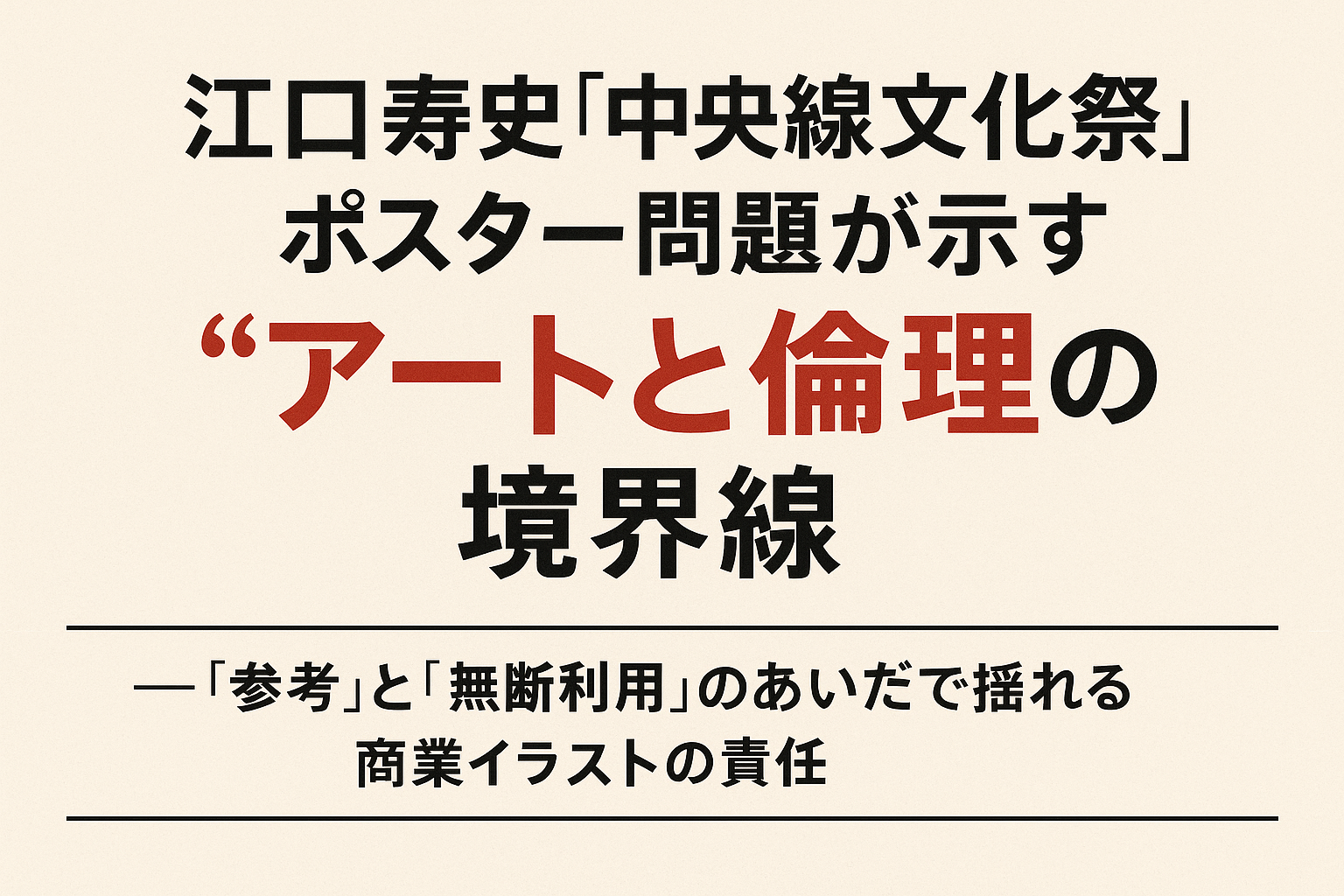Background of the Incident
In October 2025, Lumine Ogikubo, the operator of the “Chuo Line Culture Festival 2025,” announced that it would permanently withdraw the promotional visual illustrated by Hisashi Eguchi (age 69), citing “problems in the production process.”
The talk event Eguchi was scheduled to appear in was also canceled—an unusual move for a commercial facility to officially acknowledge an issue with an artist’s production process.
Eguchi, a legendary figure active in both manga and illustration since the 1970s, is known for his sophisticated depictions of women and has worked on numerous advertisements and collaborations.
However, following recent reports, critics have begun pointing out that “similar ‘reference’ practices” may exist in some of his past works as well.
What Exactly Was the “Problem”?
Eguchi previously explained on social media that he “drew the piece based on a profile photo that appeared on Instagram.”
In other words, he admitted to using a photo taken and posted by someone else as a compositional reference—without permission.
While “referring to reference photos” is a common practice in illustration, when a work is used in commercial advertisements or campaigns, it is more likely to fall under “reproduction” or “adaptation” as defined by copyright law.
Especially if the composition, pose, and lighting of the original image are reproduced closely, it can no longer be dismissed as mere “inspiration.”
The Thin Line Between “Reference” and “Tracing”
The social attention this issue has drawn stems from a broader question—the “legitimacy of references” in creative work, a question deeply connected to today’s “AI-generated art ethics.”
Every act of “reference” in creative work inevitably builds upon others’ expressions.
Yet, in commercial advertising or promotional visuals, if it is unclear whose work was used and whether permission was obtained, corporate trust is at stake.
Lumine’s decision to “permanently discontinue all use” of the visual is not just a replacement of artwork—it serves as a statement reaffirming ethical standards in creative production.
Cultural Impact: When a “Master” of Japanese Art Was Questioned
Eguchi has long been a central figure in Japan’s pop culture.
His artistic style has influenced generations of illustrators and has been celebrated in the intersection of “fashion and art.”
However, this incident delivers a harsh message to such symbolic figures:
the times have changed.
We now live in an era where transparency in creation is valued as much as the final quality of the work itself.
Future Discussion Points: Toward Governance in Commercial Illustration
- Companies are likely to strengthen requirements for illustrators and agencies to verify the sources of reference materials.
- Artists will need to ensure credibility by making their production process more transparent.
- Society as a whole may need to re-examine the boundaries between “imitation,” “quotation,” and “reference.”
As AI-generated works and photo-based tracing continue to blur these boundaries, this case compels us to reconsider where the balance should lie between creative freedom and the rights of others.
The Era Demanding “Transparent Creation”
This incident does not negate Hisashi Eguchi’s achievements.
However, in an age where creative work is increasingly intertwined with social contexts,“how something is made” has become a part of the artwork itself.
To preserve creative freedom, we must first uphold ethical referencing practices.
That, perhaps, is the most sincere message we can pass on to the next generation of creators.

